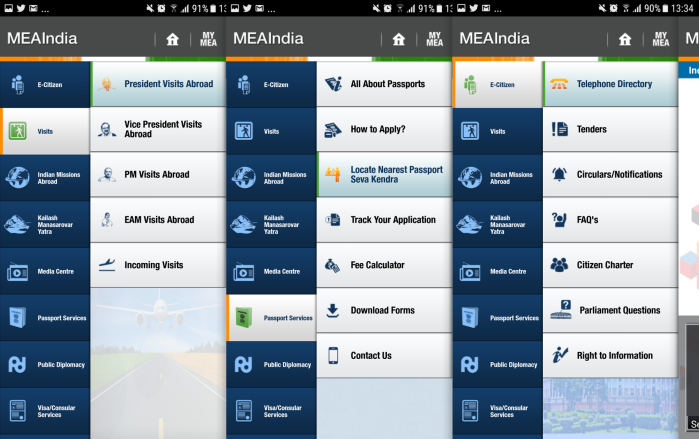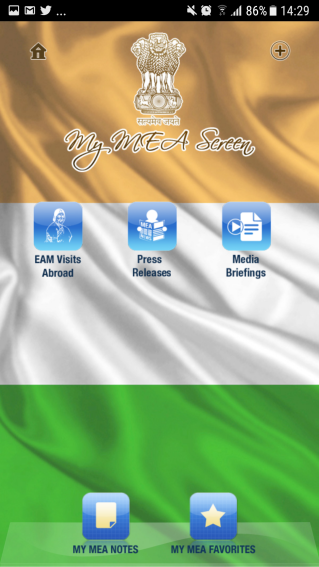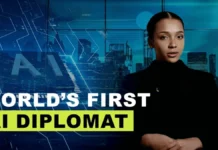From Digital Diplomacy 1.0 to Digital Diplomacy 2.0
When foreign ministries first migrated online, they viewed social media platforms as mass media channels. Much like the radio and television, Twitter and Facebook could be used to disseminate messages among millions of users. The conceptualization of social media as mass media was, in part, the result of diplomats’ previous use of communication technologies. During the Cold War, foreign ministries employed both the radio and the television to transmit information, and propaganda, to foreign populations. Importantly, television and radio are not just mass media but they are also one-way communication mediums that include no interaction between communicator and recipient (Thanks to James Pamment for this insight). Given their reliance on the radio and television, diplomats also envisioned social media as a one way communication tool. Therefore, the focus of online activity was information dissemination and the parameter for success was audience reach. MFAs relied mostly on general engagement parameters such as the number of followers they attracted on social media, the number of Re-Tweets their messages garnered and their overall reach online.
However, foreign ministries soon learned that social media was quite different from the radio and television in that users could react to diplomats’ content and even hijack that content for their own purposes. One notable example was Sweden’s launching of a virtual embassy on Second Life. Sweden’s goal was to open a global embassy that could showcase Swedish art to people the world over. However, some Second Life users saw the embassy as a state sponsored invasion of virtual space and protested the embassy by having a sex party on its roof.
What followed was the realization that social media was a two-way medium that saw constant interaction between messenger and recipient. While some diplomats feared the power of the masses online, others saw an opportunity to better craft diplomatic messages. By using the feedback of social media users diplomats could identify which elements of their foreign policy were contested or negatively viewed. Moreover, diplomats could use online comments to better understand how their nation was viewed in various parts of the world. Diplomats could also identify issues that are of greatest concern to online users.
Thus began the age of digital diplomacy 2.0. What characterized digital diplomacy 2.0, which began circa 2014, was the transition from targeting to tailoring. Foreign ministries were no longer occupied with reaching masses of audiences, but with reaching specific audiences. Moreover, foreign ministries aimed to tailor their messages to the interests, views and beliefs of these specific audiences. For instance, foreign ministries sought to engage with their Diasporas so as to leverage Diasporas as political and financial assets. To do so, some ministries created dedicated social media channels. Others tasked embassies with reaching out to, and engaging with, national Diasporas. In addition, foreign ministries sought to interact with opinion makers such as journalists, bloggers and other diplomatic institutions. Thus, they were no longer occupied with how many followers they attracted online but with how many diplomats and journalists they attracted. By 2016, foreign ministries and embassies were using network analysis and sentiment analysis to identify, reach and interact with specific audiences while adjusting their evaluation parameters.
Yet it was 2017 that has seen the slow emergence of the next stage of digital diplomacy, that of personalized diplomacy.
Digital Diplomacy 3.0: Personalized Diplomacy
The third, and current stage of digital diplomacy is that of personalized diplomacy. It is during this stage that foreign ministries and diplomats will attempt to create a diplomatic experience that is tailored to the individual. Such tailoring may centre on the user’s interests, needs or patterns of use of technology.
One interesting example is the smartphone application of the Indian Ministry of External Affairs (MEA). The MEA is not the first foreign ministry to launch its own application. Both the Polish and the Canadian ministries have launched such applications. However, while the Canadian application focuses on consular aid, the MEA’s application focuses on supplying services and information to users. Moreover, unlike the Canadian application which is relevant for Canadian citizens, the MEA application seems to target both domestic and foreign populations.
The application has seven features. The first is the e-Citizen feature that offers e-services to Indian citizens ranging from telephone directories to employment opportunities at the MEA.
The second feature enables users to track state visits by Indian officials abroad as well as state visits by foreign dignitaries to India. The scope of available information is substantive ranging from images to bi-lateral and multi-lateral documents signed during state visits as well public statements. The third feature enables users to locate the nearest embassy to them, to read updates from embassies and even to hear podcasts by Indian ambassadors posted abroad. The fifth feature is the media centre which consists of a wide array of documents, press releases, speeches and statements and transcripts of media briefings.

The fixth feature is a consular one. It is in this feature that a user can apply for visas, track his application, download forms and even communicate with the MEA. The seventh and final feature focuses on public diplomacy. It is under this feature that a user can hear lectures on Indian diplomacy from former ambassadors, watch documentaries on India or read issues of the MEA’s magazine- India Perspectives.
The review of the MEA’s application thus far suggest that it offers a breadth of information. However, the most interesting feature of the application is its personalization mechanism. Each user can create his own MEA application by selecting the specific issues he wishes to follow more closely. Users even have a notepad where they can write comments on the information they have reviewed.

This form of digital diplomacy offers users a personalized digital experience that is tailored to their interests and needs. Journalists can follow press briefings and state visits while prospective tourists can follow embassy updates and track their visa application. Users can even interact with the MEA through the various modules. By offering users a personalized experience, the MEA increases the likelihood of users returning to the application, engaging with MEA content and sharing what they have learned with online contacts. From a branding perspective, the application is also noteworthy as it contributes to the depiction of India as a rising technological power.

Where to Next?
The practice of digital diplomacy 3.0 will likely continue to take shape in coming years. This process may be facilitated by a host of new technologies. Virtual and augmented reality may soon enable users to virtually travel to other countries and experience their culture and history. Such trips will be personalized and will offer each user an experience that matches his specific interests. Artificial intelligence will be employed to communicate with online users and best meet their consular needs while smartphone applications will send users notifications tailored to their interests. Importantly, foreign ministries should invest in developing personalized forms of digital diplomacy given that online users are already accustomed to personalized online experiences when logging onto Netflix, Amazon or Pizza Hut.
Note: My thanks to a group blog by students studying the eponymous module at London Metropolitan University, 2017-18 who brought the MEA application to my attention. Their own analysis of Indian Digital Diplomacy may be viewed at the following link
https://pdgc2017a.wordpress.com/2017/11/10/indias-giant-step-into-modern-digital-diplomacy/














